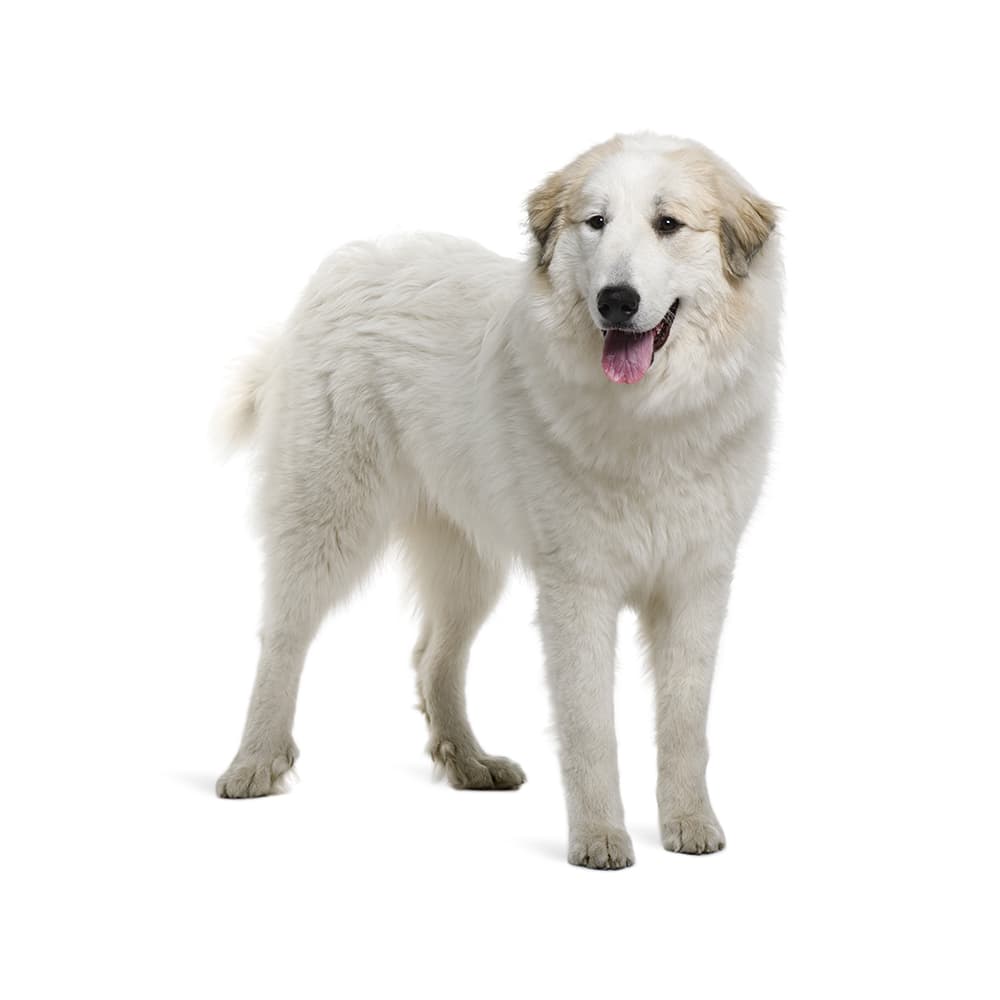Discover your dog's connection to this breed and 200+ others


Discover your dog's connection to this breed and 200+ others



The Great Pyrenees, also known as the Pyrenean Mountain Dog, has a long and storied history. It is believed to have originated in the Pyrenees Mountains between France and Spain, where they were used by shepherds to guard livestock, particularly sheep, from predators such as wolves and bears. The breed's ancestry can be traced back to ancient Molossian dogs, which were used for guarding and protecting livestock by various ancient civilizations.
The Great Pyrenees can suffer from hip and elbow dysplasia, patellar luxation, degenerative myelopathy, and progressive rod-cone degeneration. They may also be affected by Glanzmann's Thrombasthenia (type I) and canine multifocal retinopathy 1 (CMR1). Genetic testing can assist veterinarians with diagnosis and proactive care, as well as help breeders identify affected and carrier dogs.
Great Pyrenees are known for their gentle and affectionate nature, especially towards their family and those they consider their "flock." They are excellent guardians, remaining vigilant and protective of their territory and loved ones. However, this breed can also be somewhat independent and strong-willed, so early and consistent training is essential to ensure they become well-mannered companions.
A canine genetic lineage is a group of individuals or entire breeds that descended from common ancestors predating modern breed formation. Often these lineages are associated with a ‘type’ of dog with a unique historical working role and associated behaviors (e.g., herding, scent hunting, etc.).
Mastiff and bull-type breeds have strong, muscular builds. Both mastiff and bull-type breeds are protective and loyal, which are essential traits for this breed as guardian dogs and as companions. Although they appear imposing, many of these breeds are known for their gentleness and affection towards their families. They are a great example of loyal guardian dogs.
Example breeds with ancestry from this lineage include French Bulldog, St. Bernard, and Bullmastiff.
Pyrenees remains have been found in the fossil deposits of the Bronze Age (1800-1000 BC).
Great Pyrenees have a strong instinct to wander and roam, which is a trait that stems from their history as mountain livestock guardians. It's important to have a secure fence to prevent them from wandering off.
This breed has been used to guard various kinds of livestock, including sheep, goats, and even poultry, due to their strong protective instincts.
Great Pyrenees have a tendency to bark, which is another behavior that served them well as guardians. They use their bark to warn potential threats and deter predators.
In their native regions, Great Pyrenees have sometimes been called "Pyrs" for short, which is a common nickname for the breed.
https://vgl.ucdavis.edu/breed/great-pyrenees?page=1
https://www.fci.be/en/nomenclature/PYRENEAN-MOUNTAIN-DOG-137.html
https://www.ukcdogs.com/great-pyrenees
https://www.akc.org/dog-breeds/great-pyrenees/
https://www.hillspet.com/dog-care/dog-breeds/great-pyrenees
https://www.ofa.org/recommended-tests?breed=GP
Recommended by top vets with decades of experience
21 breeds
64 genetic health markers
50 genetic trait markers
